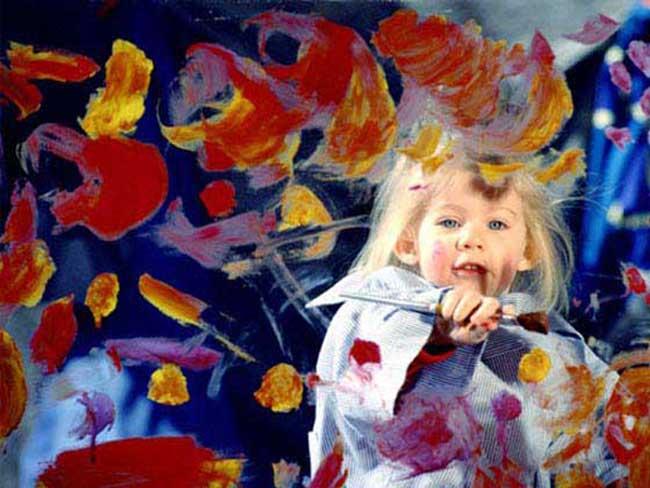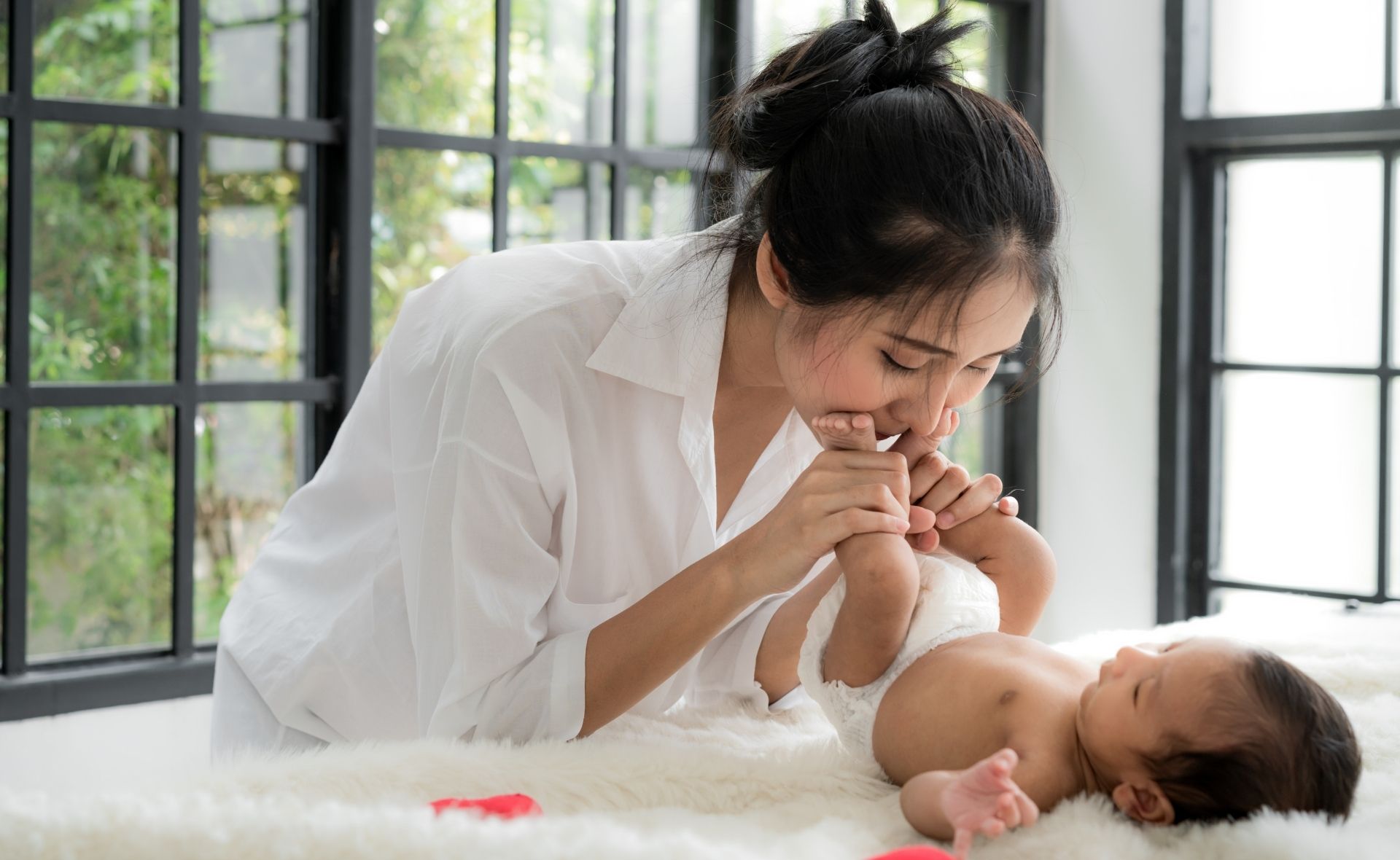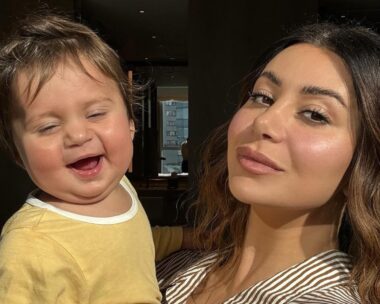Samuel, 18 months, is painting at an easel for the first time. He tentatively picks up a brush and looks at the orange paint covering the bristles. He then moves the brush towards the paper in front of him, his eyes fixed on the paint. As he moves the brush down the paper, leaving an orange streak behind him, he jumps back from the easel with his mouth open, pointing at the paper as if to say, “Look at what I just did!” He leans forward to make another stroke and this time laughs and claps his hands. “I did it again!” he seems to exclaim. Samuel has just had his first experience with paint and if his reaction is anything to go by, it certainly won’t be his last – like little ones everywhere, he’s hooked.
Easy intros
Jodie Stirling, Co-ordinator of Under-Threes at the Early Learning Centre of a Melbourne private school is responsible for the first art experiences of many young children. The delight that radiates from these enthusiastic first timers is something she never grows tired of and as an Early Childhood professional, she is keenly aware that keeping these first-time experiences simple is the key to success.
“I once took a series of photos of a little girl experiencing play dough for the first time,” she recalls. “It was incredible, she poked it, rolled it, mashed it, smelt it, held it up against her cheek, it was a total sensory experience. She didn’t use any other equipment. She didn’t need to. Because she had never used play dough before, the play dough itself was enough.”
The key is to introduce materials slowly and simply so that children get to explore materials and practice skills before moving onto more complex equipment. “When I introduce painting, I will stick to just one or two colours to begin with so that the children can focus on their technique. To begin with, they’re just marveling at their ability to create brush strokes, they’re not concerned at all with producing a work of art,” she says.
Ready, set, go
Like all other milestones, children are ready for different experiences at different times. Below is a rough guide of what your child might be ready for at various ages and stages:
At 9-12 months: Your child generally has enough strength in her fine motor skills to be able to grasp a large crayon or paint brush and move it with enough force to create an effect. She is also starting to explore the relationship between cause and effect. This realisation means she is aware that she is responsible for what is going on which gives her a strong sense of enjoyment in what she is doing.
Try: Drawing in her highchair with white A4 paper and thicker crayons. Painting in her highchair with a fat, round paintbrush and just one or two colours.
At 12-18 months: Your child’s fine motor skills are progressing, improving her ability to manipulate objects and have more control over what she can do. Her gross motor skills are improving too, giving her better mobility. She is also starting to solve more complex problems and have some ability to predict what the consequences of her actions will be, particularly if she has had lots of opportunity to practice her art skills.
Try: Drawing with thinner crayons on larger sheets of paper set up on a small table. Painting at an easel with finer brushes and two or three colours. Adding some sand to the paint to change the texture. Providing some play dough to poke, prod, roll and mould.
At 18 – 24 months: Your child will have more purpose in her artwork as she gains better control of the materials and starts to learn more about her ability to create. She will still be drawing scribbles most of the time but may begin to draw circles. She may also start to talk about her work in a representational way eg. “That’s my dad”. As her language skills are developing she may also start to talk about what she is doing while she is working and will also start to talk about colour and shapes as her awareness of these concepts starts to emerge.
Try: Drawing with textas. Painting with a range of colours – allow your child to choose – using a range of different sized brushes. Printing with paint using different shapes – try sponge printers and rollers, household items like corks, bottle tops, small cardboard boxes, small plastic containers and cotton reels.
At 24 – 36 months: Your child may begin to start to draw recognisable faces with increasing detail. To begin with it may just be a circle with eyes and a mouth and nose but she will soon start to add legs and arms, hair, ears and maybe even teeth. There will be a lot more purpose in art activities but will still be driven largely by experimentation and sensory experiences. Her eye hand co-ordination is increasing, enabling her to be able to manipulate more complex equipment like scissors and glue.
Try: Introducing some blunt plastic scissors and providing some play dough to practice cutting. This activity allows practice and experimentation without risk of any injuries. Cutting some pictures of your child’s favourite things out of magazines and catalogues for her to glue onto pieces of paper Providing different objects to paint with to create different effects – try chopsticks, twigs, sea sponges, dishcloths. Allowing your child to draw with different implements including oil pastels and coloured pencils. These implements require different amounts of pressure to get results and they also go onto the paper with differing amounts of ease.
Safety first
When choosing art materials for young children, it’s important to choose items that are non-toxic, washable, and without sharp edges. If any art experience sees more of the art medium going into the mouth than onto the paper, it’s best to pack the activity away and try again in a month or so.




.png)